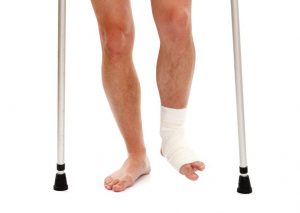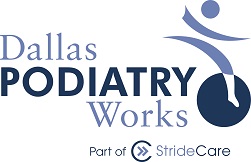Understanding Fall Prevention
 When you think of gravity, you might conjure the proverbial image of Sir Isaac Newton sitting under the tree and getting hit in the head by a falling apple, but Dallas Podiatry Works thinks about fall prevention measures for our patients! We know that everyone falls victim to gravity’s pull sooner or later. This is more likely to happen as you age; and the severity of injury increases along with the odds—to the point that falling is the leading cause of injuries for individuals aged 65 and older. Preventing falls from happening in the first place is essential to your health, and we are here to help.
When you think of gravity, you might conjure the proverbial image of Sir Isaac Newton sitting under the tree and getting hit in the head by a falling apple, but Dallas Podiatry Works thinks about fall prevention measures for our patients! We know that everyone falls victim to gravity’s pull sooner or later. This is more likely to happen as you age; and the severity of injury increases along with the odds—to the point that falling is the leading cause of injuries for individuals aged 65 and older. Preventing falls from happening in the first place is essential to your health, and we are here to help.
Risk Factors for a Fall
Whereas most people consider falling as an issue for elderly people (because their risk factor is high), it can happen to anyone. The risk factors for a fall can be broken into three different categories: personal, medical, and environmental. Personal risk factors are centered on such matters as age, activity, diet, and habits. Medical risk factors include osteoporosis, arthritis, Alzheimer’s disease, and cancer. Such environmental factors as slippery surfaces, cluttered pathways, and poor lighting can create unsafe conditions regardless of your age or overall health.
Elderly Concerns
Falls happen to everyone, but is a particular concern for senior citizens. According to the Center for Disease Control (CDC), one of three adults over the age of 65 will fall every year. Factors contributing to this include diminished eyesight, balance, and strength capacities. This demographic of the population is more at risk for sustaining a broken bone than younger ones. Over 90% of hip fractures (three-quarters of which happen to women) are caused by falling.
Fall Prevention
Gravity is not going away anytime soon, but there are measures that you can take for preventing falls. A good place to start is with an understanding of your overall health and fitness levels. Strength and balance are tools that will help you remain upright, so take an honest assessment of where you stand in this regard. If you find them to be lacking and feel this is contributing to your instability, talk to us about starting a program focused on strengthening exercises and developing greater balance. We will either assist you with this directly or provide support in finding the right resource. Keep in mind that you are never too old to improve your physical condition and reduce your risk of falling.
Wearing appropriate footwear goes a long way in staying upright. Make sure your footwear choices are based on proper fit and have nonskid soles. Ladies should avoid wearing high heels when possible, in order to decrease the risk of a fall.
Making Your Home Safer
In addition to exercise and proper footwear, there are many ways of preventing falls in the home. In the bedroom, keep your floor clutter-free, make sure your bed is easy to get in and out of, and use sheets and comforters made from cotton or wool instead of satiny, slippery material. Use slip-resistant mats and rugs in the tub and on the bathroom floor, and install grab bars if instability is an issue. Do not have loose rugs at either the bottom or top of any stairs and ensure that you have secure handrails on both sides.
For further tips on preventing falls in the home, check with Dallas Podiatry Works. Drs. Joel Brook, Arroyo, and McClurkin are here to take care of all your foot and ankle problems, but we want to put you in the best position to avoid painful falls. We have offices conveniently located in Dallas and Plano, TX, and can be reached at 972.853.7100.

 When you think of gravity, you might conjure the proverbial image of Sir Isaac Newton sitting under the tree and getting hit in the head by a falling apple, but Dallas Podiatry Works thinks about fall prevention measures for our patients! We know that everyone falls victim to gravity’s pull sooner or later. This is more likely to happen as you age; and the severity of injury increases along with the odds—to the point that falling is the leading cause of injuries for individuals aged 65 and older. Preventing falls from happening in the first place is essential to your health, and we are here to help.
When you think of gravity, you might conjure the proverbial image of Sir Isaac Newton sitting under the tree and getting hit in the head by a falling apple, but Dallas Podiatry Works thinks about fall prevention measures for our patients! We know that everyone falls victim to gravity’s pull sooner or later. This is more likely to happen as you age; and the severity of injury increases along with the odds—to the point that falling is the leading cause of injuries for individuals aged 65 and older. Preventing falls from happening in the first place is essential to your health, and we are here to help.


